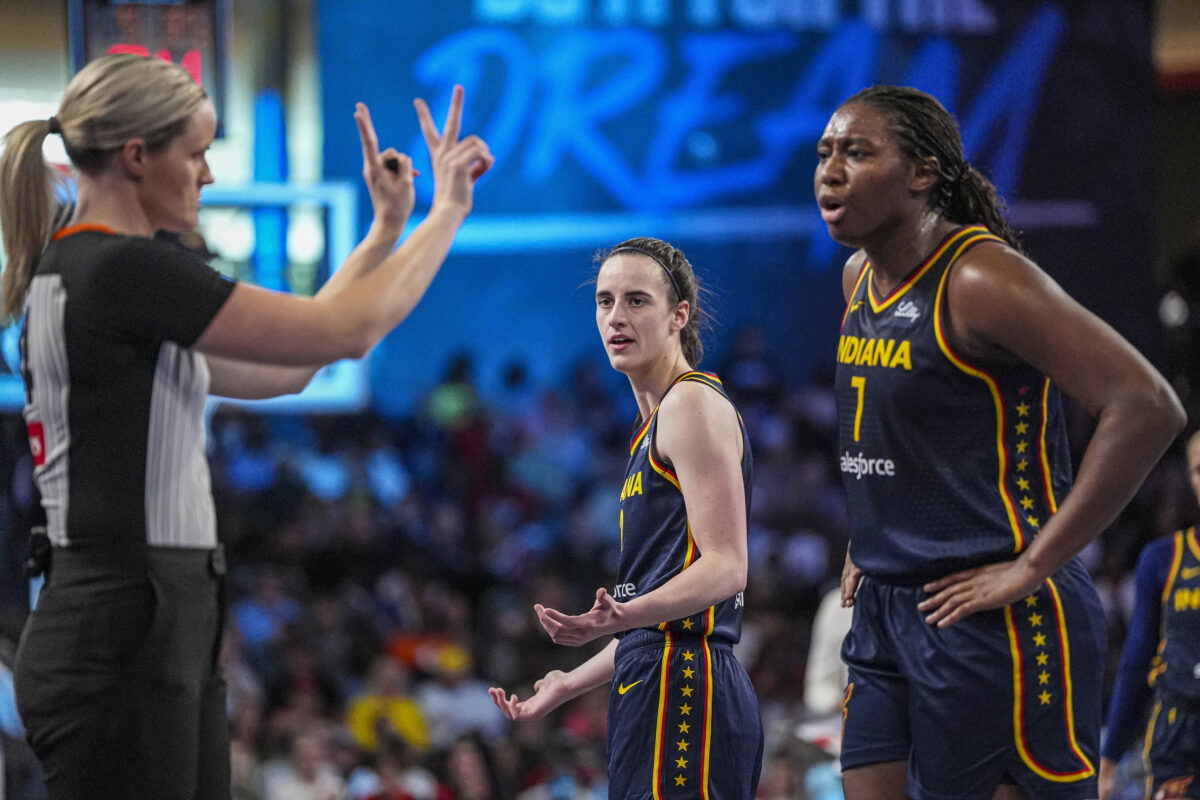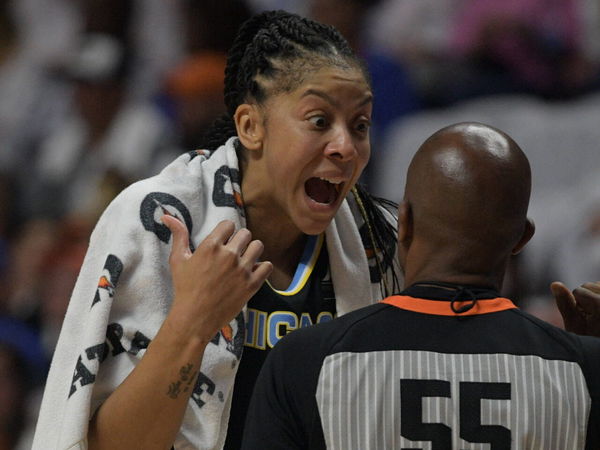
Imago
May 10, 2025; Atlanta, GA, USA; Indiana Fever guard Caitlin Clark (22) reacts to being called for a technical foul during the game against the Atlanta Dream during the first half at Gateway Center Arena @ College Park. Mandatory Credit: Dale Zanine-Imagn Images

Imago
May 10, 2025; Atlanta, GA, USA; Indiana Fever guard Caitlin Clark (22) reacts to being called for a technical foul during the game against the Atlanta Dream during the first half at Gateway Center Arena @ College Park. Mandatory Credit: Dale Zanine-Imagn Images
Be it the NBA or the WNBA, one thing that never changes is the controversy around referees’ calls. Given the level of competitiveness and how officiating can sway the outcome of a game, it all makes sense. Remember Cheryl Reeve during Game 5 of the WNBA Finals last year? “This sh*t was stolen from us,” she said after a tough loss to the New York Liberty.
Watch What’s Trending Now!
For Reeve, it didn’t feel like a fair contest. The Minnesota Lynx shot just eight free throws, while the Liberty had 23—a gap that left fans furious and reignited the conversation about officiating in the W. The trophy was long gone, but what stayed behind was outrage and a heated debate around the WNBA’s most criticized figures—the referees.
“Officiating is a lot different. When you watch NBA or men’s college, your star players get any call,” said Sabrina Ionescu. She didn’t name-drop stars like Shai Gilgeous-Alexander, who’s often labelled as a free-throw merchant, but the implication was clear: in the WNBA, star players don’t always get the same treatment. In fact, they’re often met with more physical play and fewer foul calls, a dynamic that’s sparked even more criticism.
ADVERTISEMENT
But, if you’re thinking it’s players in the middle of a conversation, it’s not. It, referees and officiating at W are the major concerns these days. But do these refs really make every decision on their own?
How WNBA referees are hired, trained, evaluated, and held accountable
Well, the lens that WNBA or NBA referees use to make calls comes from a rigorous training process, and no two refs share the same journey. Still, one thing remains consistent: they all start with a foundational stint in the G League. “Everyone takes a different path to the G League/WNBA/NBA. Today it’s more structured and defined… Most of us were working NCAA basketball before we started in the professional leagues,” shared veteran referee Amy Bonner.
ADVERTISEMENT
These refs come from diverse professional backgrounds, but it’s their sharp judgment skills that propel them forward. Once they’re spotted, they enter the NBA’s robust referee scouting and development program. “The league has scouts watching games all over the country to identify talented young referees with potential to become professionals,” Bonner explained.
The journey typically begins with grassroots camps, followed by mid-level and elite camps—intensive summer training events held over 2–3 years that offer progressive, high-level training. Based on performance, these refs are invited to evaluation events, including the Candidate Evaluation Event, where they’re analyzed and critiqued. “Officials spend time in the classroom studying video, learning the rules, communication strategies, and then working live games where they’re evaluated on the court,” Bonner added. “They’re rated on rules knowledge, fitness, system understanding, communication, and of course—call accuracy.”
ADVERTISEMENT

Imago
UNCASVILLE, CT – SEPTEMBER 04: Chicago Sky forward Candace Parker 3 engages in a discussion with a referee during Game 3 of the Semifinals of the WNBA, Basketball Damen, USA Playoffs between the Chicago Sky and the Connecticut Sun on September 4, 2022, at Mohegan Sun Arena in Uncasville, CT. Photo by Erica Denhoff/Icon Sportswire WNBA: SEP 04 Playoffs Semifinals Chicago Sky at Connecticut Sun Icon220904018
Then, they all go through the same NBA developmental program that prepares them for the pro level. “It’s a very robust training program that really prepares them for the highest professional leagues in the country,” said Monty McCutchen, Head of Referee Development and Training. And that’s why every referee’s path is unique.
While someone like Blauch was recruited straight from NCAA Division I officiating, McCutchen had little experience and was drawn to the field out of financial necessity. Emy, on the other hand, was a basketball player herself. But make no mistake—the real challenge doesn’t lie in the journey to become a referee. That part ends the day you’re hired.
ADVERTISEMENT
The real test begins after that hiring process
All professional basketball officials fall under the National Basketball Referees Association (NBRA). However, their working conditions vary greatly between leagues. That’s because each league—the NBA, WNBA, and G-League—operates under its own collective bargaining agreement. As one seasoned ref, Amy, puts it: “Each league has its own pay scale, but the WNBA and G-League are similar.”
But here’s the twist—most refs aren’t in it just for the money. Many are fueled by an unshakable love for the game. After all, they come up after years of grinding to reach the pinnacle of their profession. But every ref has got two ultimate career paths, the NBA or the WNBA. Now, while the NBA is known for being a high-octane league that requires constant whistle-blowing, the WNBA might appear to be the “easier” option—but don’t be fooled. It’s anything but a cakewalk.
ADVERTISEMENT
Majorly as there are competitive players at W as well! “Diana Taurasi is probably the most intense and competitive player I have ever officiated,” the ref admitted. “Her ferocity can be hard to handle, especially for younger officials—but that same fire has made me a better official.” With fewer than 40 officials working in the WNBA, refs often build close familiarity with players.
Some players are fiery and emotional, others calm and composed—but all of them are fiercely competitive. And behind every ref call, there’s experience, pressure, and the challenge of keeping up with some of the most passionate athletes in the world.
ADVERTISEMENT
ADVERTISEMENT
ADVERTISEMENT

